Welcome to SupremeTutorials.in, your trusted source for in-depth tutorials on essential electronics concepts. In this article, we dive into the fascinating world of inductors,types of inductors,definition of inductor, inductor definition exploring the definition of an inductor and the various types of inductors used in electrical and electronic circuits. An inductor, also known as a coil, choke, or reactor, is a passive electrical component that stores energy in a magnetic field when electric current flows through it. Inductors play a crucial role in filtering signals, energy storage, and controlling current in various applications ranging from power supplies to radio frequency circuits. Understanding the inductor definition and its operational principles is fundamental for anyone pursuing electronics. This guide will provide a clear explanation of how inductors work, their core function, and the different types available, including air-core, iron-core, and ferrite-core inductors. By the end of this article, you’ll gain a solid understanding of inductors’ structure, functionality, and diverse applications, giving you valuable insights for both practical use and academic study. Whether you’re a beginner or an experienced learner, this article will serve as a comprehensive reference for all things related to inductors.
Inductors: Definition and Function
Inductors: Definition and Function
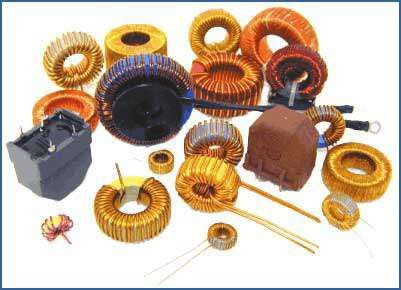
An inductor is a passive electrical component that stores energy in the form of a magnetic field when electric current flows through it. It resists changes in current by generating an opposing voltage (emf), a phenomenon described by Lenz’s Law. Inductors are commonly used in circuits to filter signals, store energy, and in applications such as transformers, motors, and radio-frequency devices.
Basic Structure of an Inductor
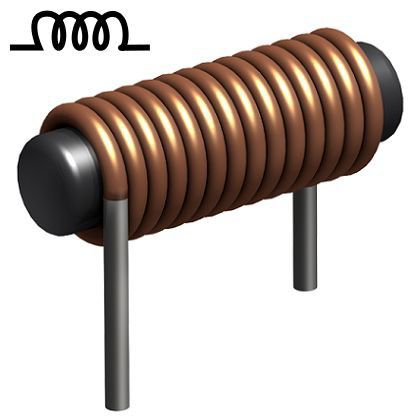
An inductor typically consists of a coil of wire. The more loops or turns in the coil, the greater the inductance. The inductance also depends on:
1. Core material: Air core, ferrite core, or iron core.
2. Number of turns: More turns increase the inductance.
3. Cross-sectional area of the coil: A larger area increases the inductance.
4. Length of the coil: A longer coil reduces the inductance.
Inductance (L)
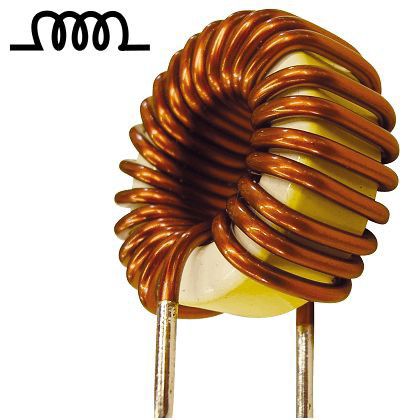
Inductance is the property of an inductor that quantifies its ability to store energy in its magnetic field. It is measured in Henrys (H). The inductance depends on the geometric and material properties of the inductor.
For a solenoid (a common type of inductor):
L = \mu0 \mur \frac{N^2 A}{l}
is the permeability of free space ().
is the relative permeability of the core material.
is the number of turns in the coil.
is the cross-sectional area of the coil.
is the length of the coil.
Energy Stored in an Inductor
When a current flows through an inductor, energy is stored in the magnetic field created around the coil. The energy stored in an inductor is given by:
U = ½ LI2
Where “L” is the inductance.
is the current flowing through the inductor.
Inductor in a Circuit
1. Inductor in DC Circuits
In a direct current (DC) circuit, once the current stabilizes (i.e., becomes constant), the inductor behaves like a short circuit, as no emf is induced. However, when there is a sudden change in current, the inductor opposes the change by generating a voltage that resists the current change.
At the moment of switching on: The inductor opposes the sudden rise in current and behaves like an open circuit.
At steady state: The inductor allows DC current to flow with zero resistance (assuming an ideal inductor).
2. Inductor in AC Circuits
In alternating current (AC) circuits, inductors continuously oppose changes in current due to the varying nature of AC. The opposition to current is called reactance. The inductive reactance in an AC circuit is given by:
XL = 2π f
f is the frequency of the AC signal.
L is the inductance of the inductor.
The voltage across the inductor leads the current by 90 degrees in an AC circuit.
Types of Inductors
1. Air-core Inductors:
No magnetic core is used (only air inside the coil).
Suitable for high-frequency applications as there is no core loss.
2. Iron-core Inductors:
An iron core is placed inside the coil to increase inductance.
Used in low-frequency applications like power transformers.
3. Ferrite-core Inductors:
Ferrite cores are used to provide high inductance with low losses at high frequencies.
Commonly used in high-frequency applications like RF circuits.
Applications of Inductors
1. Filters: Inductors are used in low-pass, high-pass, and band-pass filters to allow or block specific frequency ranges in electronic signals.
2. Transformers: Inductors in the form of coils are essential in transformers, where energy is transferred from one circuit to another via electromagnetic induction.
3. Energy Storage: Inductors store energy in their magnetic field, which is used in power supplies and converters.
4. Tuning Circuits: Inductors are used with capacitors in LC circuits to select desired frequencies in radio receivers and transmitters.
5. Chokes: Inductors are used to block high-frequency AC signals in power supply circuits while allowing DC or low-frequency signals to pass.
Series and Parallel Combinations of Inductors
1. Series Combination:
The total inductance in a series configuration is the sum of individual inductances:
Self-Inductance and Mutual Inductance
Self-Inductance: This is the property of an inductor to induce an emf in itself when the current flowing through it changes. The self-induced emf is given by:
{E} = -L {dI}÷{dt}
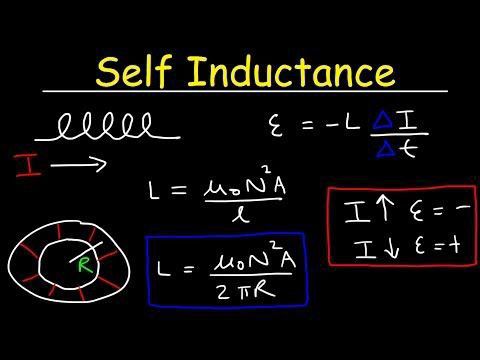
Mutual Inductance: When two inductors are placed close to each other, a change in current in one inductor can induce an emf in the other. The mutual inductance is the measure of this effect, and the induced emf in the second inductor is given by:
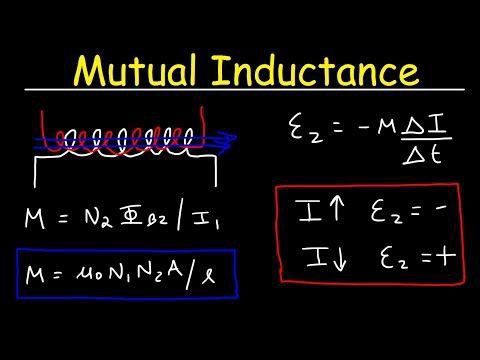
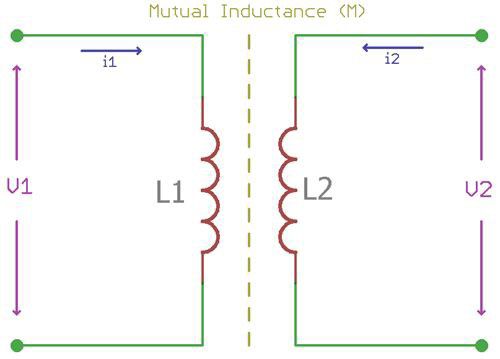
{E2} = -M {dI1}÷{dt}
Quality Factor (Q) of an Inductor
Quality Factor (Q) of an Inductor
The quality factor of an inductor is a dimensionless parameter that indicates the efficiency of the inductor in terms of energy losses. It is given by:
Q = {omega {ω L}÷{R}
Where ω omega is the angular frequency.
L is the inductance.
R is the resistance of the inductor.
Higher indicates a lower energy loss and a more efficient inductor.
Inductors play a critical role in both power and signal processing applications, thanks to their ability to oppose sudden changes in current, store energy, and work in tuning and filtering applications. Let me know if you need more details on any specific aspect of inductors!







I was studying some of your posts on this internet site and I believe this site is real instructive! Keep on putting up.
You have brought up a very wonderful details , appreciate it for the post.
Hello! I just would like to give a huge thumbs up for the great info you have here on this post. I will be coming back to your blog for more soon.
Absolutely composed content material, Really enjoyed examining.
Really Appreciate this update, can I set it up so I get an email sent to me when there is a new article?
Nice read, I just passed this onto a friend who was doing a little research on that. And he just bought me lunch as I found it for him smile So let me rephrase that: Thanks for lunch!
Real excellent information can be found on site.
Great wordpress blog here.. It’s hard to find quality writing like yours these days. I really appreciate people like you! take care
That is the proper blog for anyone who desires to find out about this topic. You notice so much its virtually onerous to argue with you (not that I really would need…HaHa). You positively put a brand new spin on a topic thats been written about for years. Nice stuff, simply nice!
you have a great blog here! would you like to make some invite posts on my blog?
Everyone loves what you guys are usually up too. This type of clever work and reporting! Keep up the terrific works guys I’ve included you guys to my own blogroll.
I enjoy the efforts you have put in this, thankyou for all the great content.
I have been absent for a while, but now I remember why I used to love this web site. Thank you, I will try and check back more often. How frequently you update your website?
Good V I should definitely pronounce, impressed with your website. I had no trouble navigating through all tabs and related info ended up being truly simple to do to access. I recently found what I hoped for before you know it at all. Quite unusual. Is likely to appreciate it for those who add forums or something, website theme . a tones way for your customer to communicate. Nice task..
I as well think thus, perfectly indited post! .
Can I just say what a relief to find someone who actually knows what theyre talking about on the internet. You definitely know how to bring an issue to light and make it important. More people need to read this and understand this side of the story. I cant believe youre not more popular because you definitely have the gift.
I couldn’t resist commenting
Youre so cool! I dont suppose Ive read something like this before. So nice to find somebody with some original ideas on this subject. realy thank you for beginning this up. this website is something that is wanted on the web, someone with just a little originality. useful job for bringing something new to the web!
I will immediately grab your rss as I can’t find your email subscription link or newsletter service. Do you’ve any? Please let me know so that I could subscribe. Thanks.
Really enjoyed this blog post, can you make it so I get an email every time you write a fresh update?
I believe you have remarked some very interesting details , regards for the post.
Hey there just wanted to give you a quick heads up. The words in your post seem to be running off the screen in Chrome. I’m not sure if this is a formatting issue or something to do with browser compatibility but I thought I’d post to let you know. The style and design look great though! Hope you get the problem resolved soon. Many thanks
Hi there, You have performed a fantastic job. I will definitely digg it and in my view suggest to my friends. I’m confident they’ll be benefited from this web site.
Great tremendous issues here. I am very glad to see your article. Thank you a lot and i am looking forward to contact you. Will you kindly drop me a e-mail?
Thankyou for this post, I am a big fan of this site would like to proceed updated.
you have an incredible weblog here! would you wish to make some invite posts on my blog?
Hello would you mind letting me know which web host you’re working with? I’ve loaded your blog in 3 different web browsers and I must say this blog loads a lot faster then most. Can you suggest a good web hosting provider at a honest price? Thank you, I appreciate it!
I am curious to find out what blog platform you happen to be using? I’m having some small security issues with my latest site and I would like to find something more risk-free. Do you have any suggestions?
What’s Happening i’m new to this, I stumbled upon this I’ve discovered It positively helpful and it has helped me out loads. I hope to give a contribution & assist different users like its helped me. Great job.
I was looking through some of your blog posts on this website and I think this internet site is real informative ! Retain posting.
My developer is trying to persuade me to move to .net from PHP. I have always disliked the idea because of the expenses. But he’s tryiong none the less. I’ve been using WordPress on a number of websites for about a year and am anxious about switching to another platform. I have heard excellent things about blogengine.net. Is there a way I can transfer all my wordpress posts into it? Any kind of help would be really appreciated!
Hello. magnificent job. I did not expect this. This is a excellent story. Thanks!
When I originally commented I clicked the -Notify me when new comments are added- checkbox and now every time a comment is added I get four emails with the same comment. Is there any manner you possibly can take away me from that service? Thanks!
Just want to say your article is as astounding. The clearness on your submit is just spectacular and that i could assume you’re an expert in this subject. Well together with your permission allow me to grasp your RSS feed to stay updated with impending post. Thanks one million and please continue the gratifying work.
I conceive you have observed some very interesting details , thankyou for the post.
It is really a nice and useful piece of info. I’m glad that you just shared this helpful information with us. Please keep us up to date like this. Thank you for sharing.
We are a group of volunteers and starting a new scheme in our community. Your site provided us with valuable info to work on. You have done an impressive job and our whole community will be thankful to you.
It?¦s in reality a nice and helpful piece of information. I am happy that you just shared this helpful information with us. Please stay us informed like this. Thanks for sharing.
Great post. I was checking continuously this blog and I am impressed! Extremely useful information specifically the last part 🙂 I care for such info a lot. I was looking for this particular information for a very long time. Thank you and best of luck.
What’s Happening i’m new to this, I stumbled upon this I’ve found It positively helpful and it has aided me out loads. I hope to contribute & aid other users like its helped me. Great job.
I haven’t checked in here for a while because I thought it was getting boring, but the last several posts are good quality so I guess I will add you back to my daily bloglist. You deserve it my friend 🙂
Hello, you used to write fantastic, but the last several posts have been kinda boring?K I miss your super writings. Past few posts are just a little bit out of track! come on!
I visited a lot of website but I think this one holds something special in it in it
BWER sets the standard for weighbridge excellence in Iraq, offering innovative, reliable systems and dedicated support to ensure optimal performance and client satisfaction.